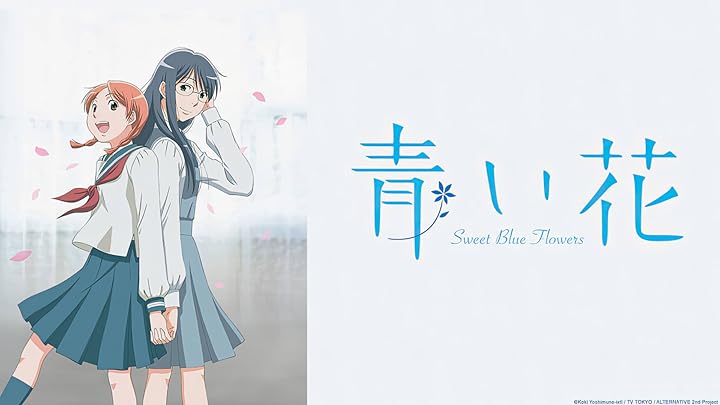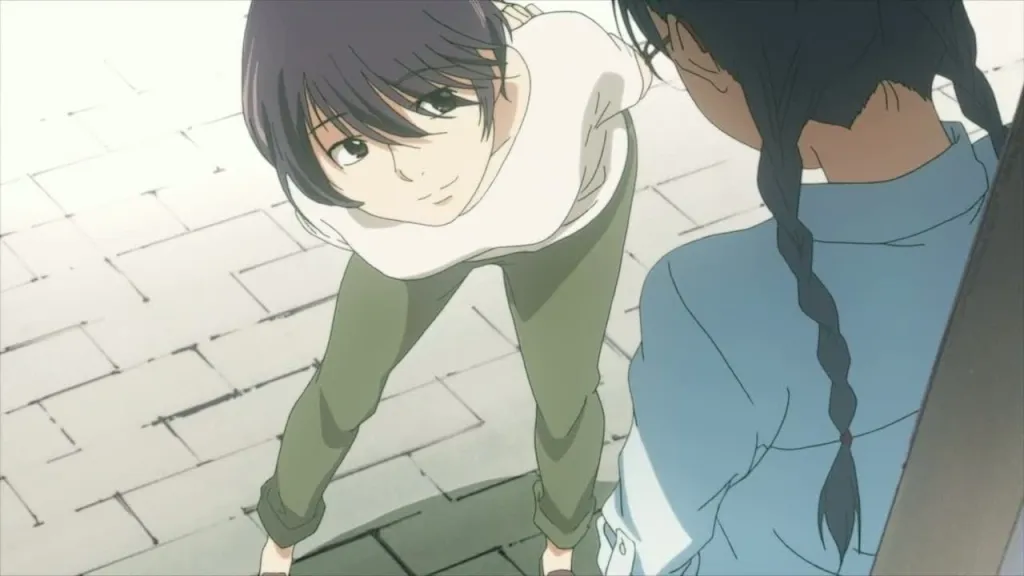This review of Sweet Blue Flowers dives into the tender but complicated relationship between Fumi and Akira, highlighting themes of friendship, first love, and the quiet struggles of growing up. I share my personal thoughts after reading it on ComicK, exploring the manga’s strengths, its slow pacing at times, and why it still feels like an essential LGBTQ+ love story worth experiencing.
A First Encounter on ComicK
When I first opened Sweet Blue Flowers on ComicK, I didn’t expect to be swept away so quickly. The pastel artwork, delicate expressions, and nostalgic setting instantly reminded me of the awkwardness of my own high school days. ComicK’s smooth reading experience made it easy to lose myself in the story without distraction, almost as if I were eavesdropping on Fumi and Akira’s private conversations.
Fumi, quiet and hesitant, contrasts beautifully with the cheerful and outgoing Akira. Their reunion after a decade apart sets the tone for everything that follows: a story about rediscovering bonds, testing the meaning of friendship, and tiptoeing toward something that might be love. As someone who values subtle storytelling, I found myself deeply moved by how naturally their connection was rekindled.
Of course, not every moment felt perfect. There were times I grew impatient with the pacing, especially in the second volume where emotional progress seemed stuck. But I’ll admit that’s also what made the story feel authentic. Relationships don’t always move in clean, dramatic arcs. Sometimes they hesitate, falter, and circle back, just like real life.

Fumi and Yasuko – A Love That Feels Like Illusion
One of the most striking parts of volume one is Fumi’s relationship with Yasuko. She’s bold, magnetic, and takes on the role of Heathcliff in the school play. At first, I thought Yasuko might be the one who would lead Fumi toward confidence. Their scenes together were electric, like watching a candle flare brightly for a brief, unforgettable moment.
Yet as quickly as Yasuko appeared, she faded away. Her abrupt departure left me with mixed feelings—part of me admired the realistic portrayal of fleeting teenage romances, while another part of me wished she had been developed more. It almost felt like Shimura-sensei dangled Yasuko in front of us only to snatch her away when we started to care.
Still, Yasuko’s role shouldn’t be underestimated. For Fumi, she was more than just a romantic experiment she was the mirror reflecting all of Fumi’s insecurities and quiet longings. Yasuko’s confident presence forced Fumi to ask herself what she truly wanted, and that’s a question that lingers far beyond the final page of volume one.
The Slow Burn Between Fumi and Akira
If Yasuko was fire, Akira is water steady, warm, and quietly life-giving. Watching Fumi and Akira navigate their feelings felt like a long walk on a narrow bridge: every step hesitant, but each one bringing them closer to something deeper. Reading these moments on ComicK late at night, I couldn’t help but smile at the small gestures, like the yearning to simply hold hands.
Volume two admittedly tested my patience. The story seemed to drag, with Fumi circling endlessly around her feelings. At one point, I almost closed the tab and moved on to something else. But then, little by little, the subtle shifts returned. A glance here, a hesitation there—it reminded me why slow burns, though frustrating, can be the most rewarding.
By volume three, the payoff was worth it. The tension that had been building finally found release, and for the first time, I felt confident about where their relationship was heading. It’s not dramatic fireworks—it’s quiet, fragile, but undeniably real. And honestly, isn’t that exactly what first love feels like?
Themes of Growing Up and Social Pressures
What struck me most while reading was how Shimura doesn’t shy away from uncomfortable truths. Scenes of students worrying about harassment on trains or girls struggling with arranged marriages inject a sobering realism into what might otherwise be a dreamy school romance. These moments pulled me out of nostalgia and reminded me how complicated adolescence really is.
Sometimes, I questioned whether these darker elements disrupted the tone of the story. They jarred against the softness of Fumi and Akira’s budding relationship. But on reflection, I realized that’s the point: young love doesn’t exist in a bubble. It’s tangled up with societal expectations, fears, and the weight of growing up.
I appreciated how the manga balanced these heavier topics without turning the story into melodrama. Instead, they linger like shadows at the edges of a sunlit day—always present, but never completely overwhelming the warmth at the center. That subtlety is part of what makes Sweet Blue Flowers stand out among other school romance manga.

The Artwork: Pastel Dreams and Honest Details
Visually, Sweet Blue Flowers is a treat. The pastel covers alone felt like whispers of spring, pulling me in before I even read the first page. Inside, the artwork is soft yet precise, capturing both the tenderness and awkwardness of adolescence with gentle strokes. Reading it digitally on ComicK, the details popped in a way that made me appreciate Shimura’s craftsmanship even more.
What I loved most were the expressions. A single glance between Fumi and Akira often carried more weight than pages of dialogue. Those small, quiet panels spoke volumes reminding me of my own teenage years when eye contact could feel more intimate than a kiss.
However, I can’t ignore the occasional fanservice-y moments, like the overemphasis on breasts in the beginning. They felt unnecessary and even a bit juvenile compared to the otherwise thoughtful tone of the story. Thankfully, these moments were brief and quickly gave way to the tender, emotional storytelling that defines the series.
Strengths, Weaknesses, and Final Impressions
The greatest strength of Sweet Blue Flowers lies in its emotional honesty. It doesn’t sensationalize love or force drama where it doesn’t belong. Instead, it captures the quiet confusion of realizing your feelings for someone you thought of as “just a friend.” That sincerity left a mark on me long after I closed the final chapter on ComicK.
Its weaknesses are worth mentioning: the pacing in volume two nearly lost me, and some characters were underdeveloped or introduced confusingly with shifting names. These flaws, while frustrating, didn’t erase the impact of the core relationship that anchors the story.
Overall, Sweet Blue Flowers is a bittersweet, tender exploration of friendship evolving into love. It isn’t perfect, but maybe that’s why it feels so real. For anyone looking for an LGBTQ+ romance that values subtlety over spectacle, this manga deserves a place on your reading list. And if you’re like me, reading it on ComicK makes the journey all the smoother, free, and unforgettable.
